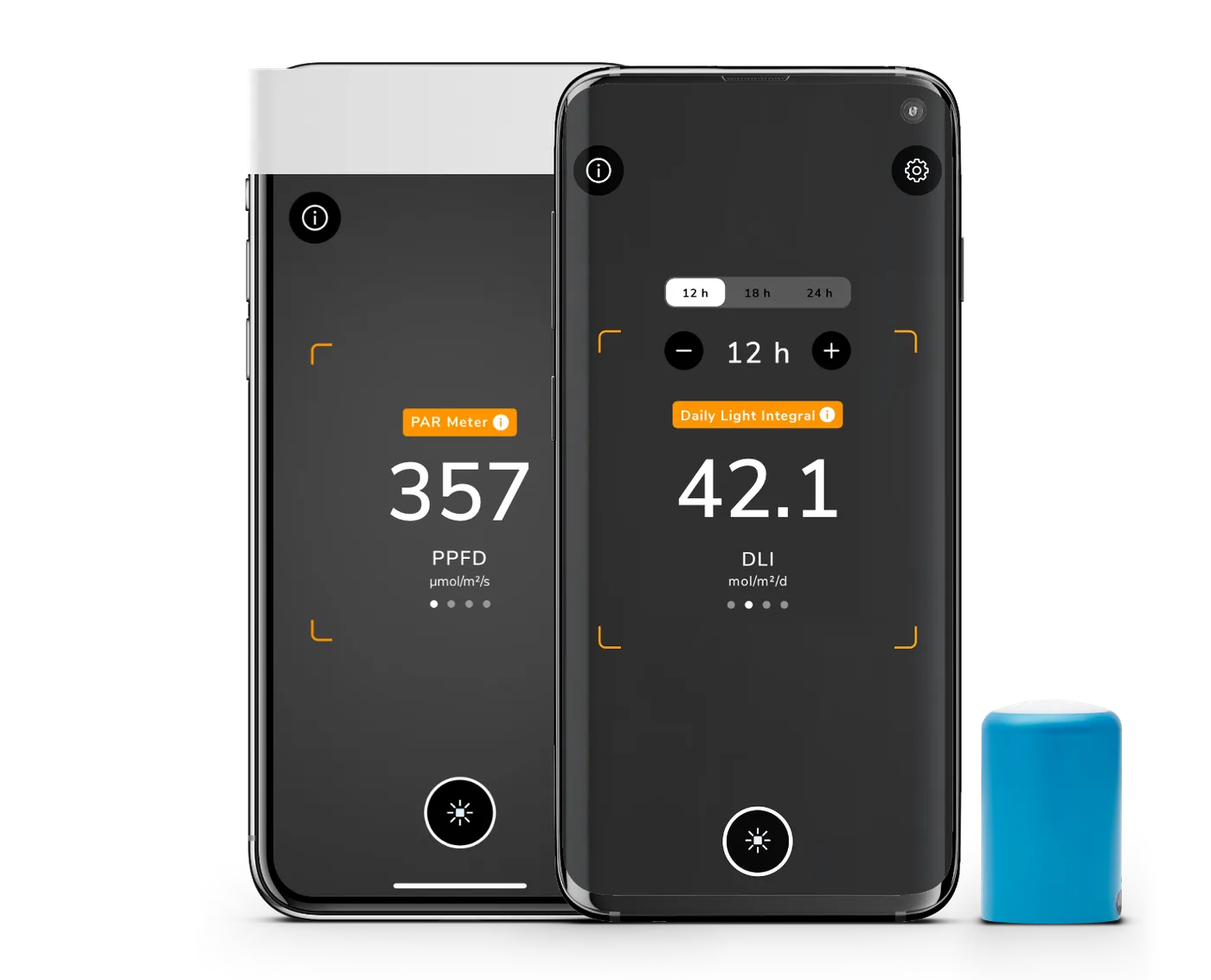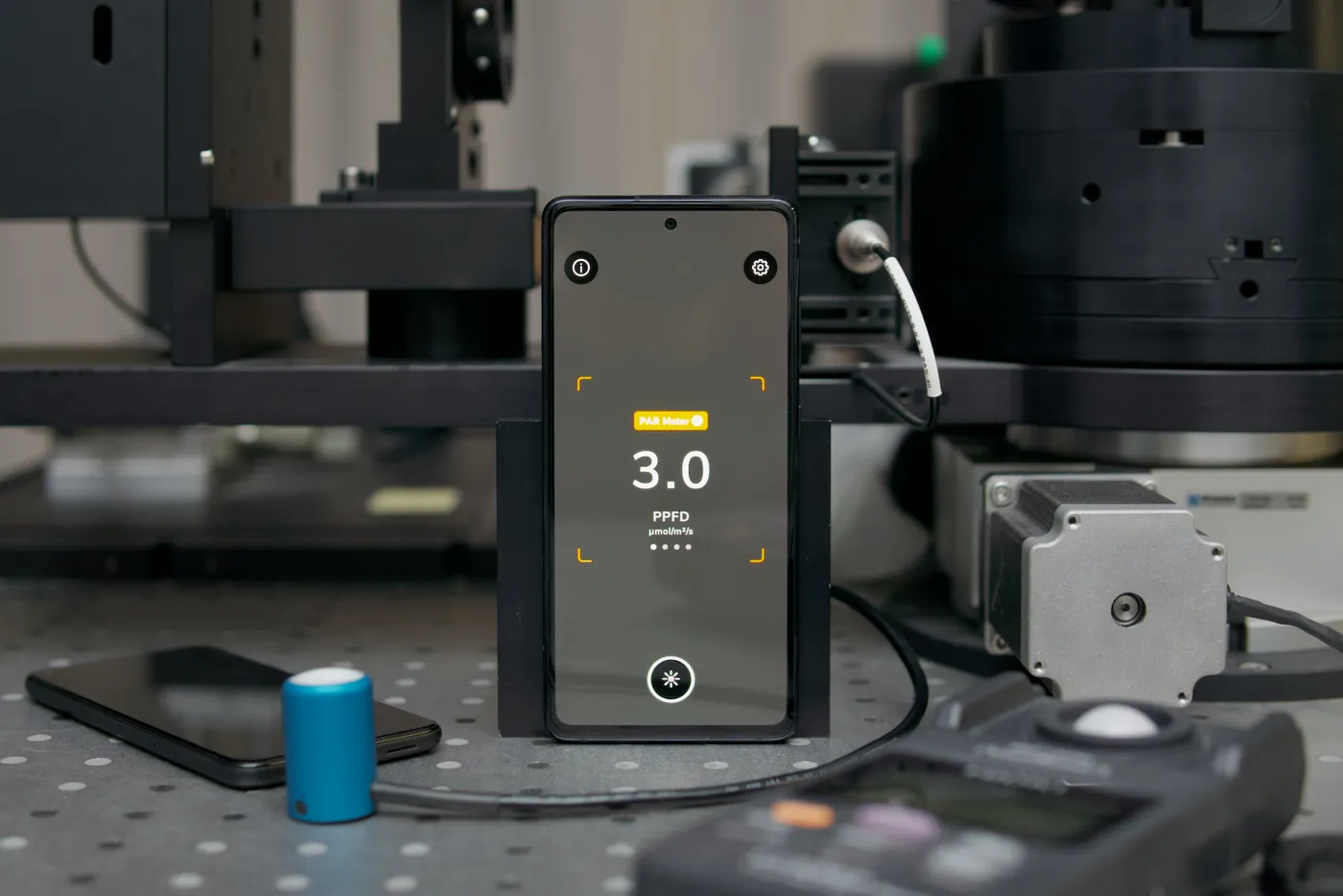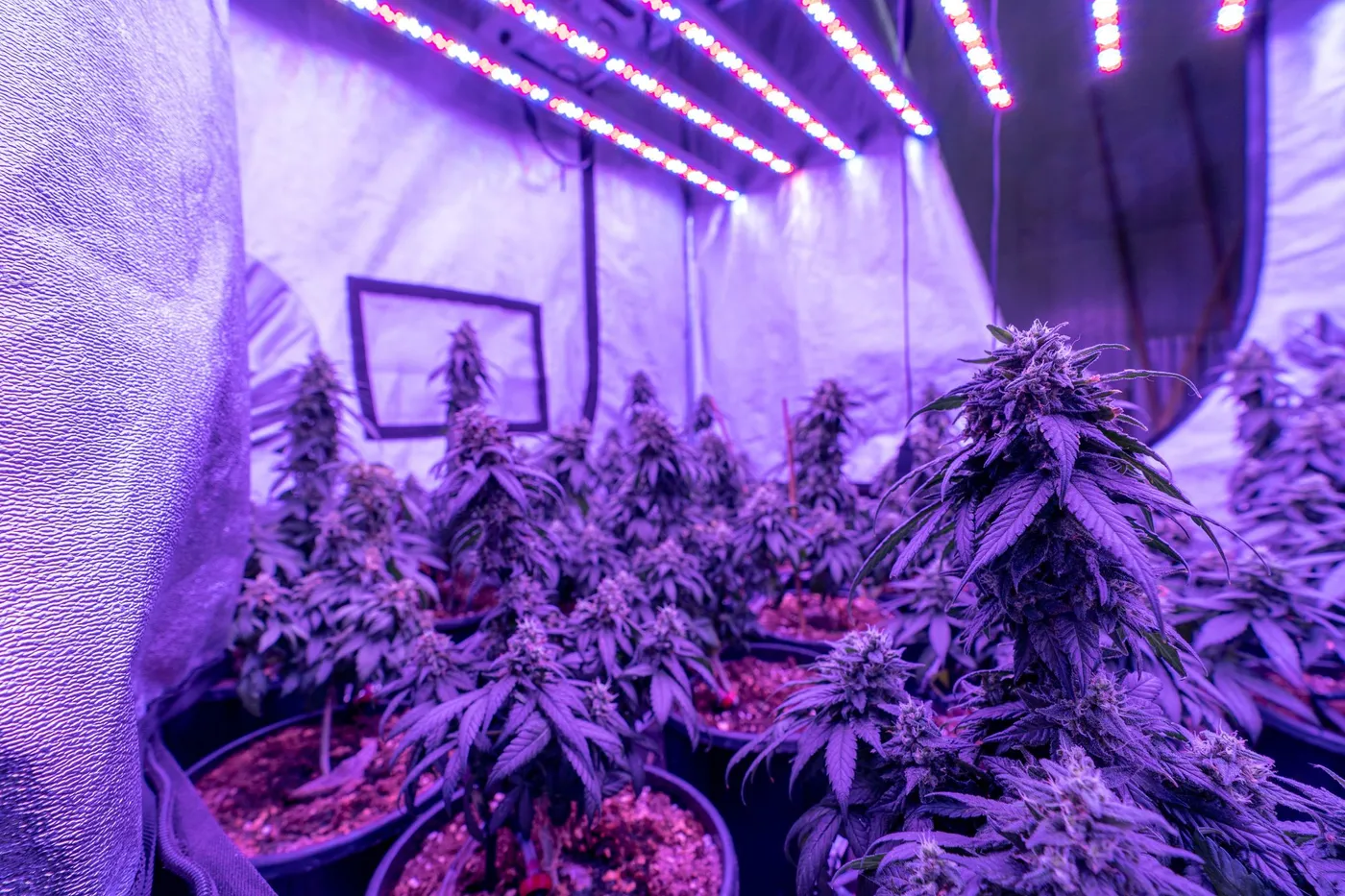
Auto-Translate
When researching lighting and especially grow lights, you will inevitably stumble across some common metrics and abbreviations. Some of them are more advanced while others are pretty common. Assuming you aren’t an engineer or a horticulture scientist, we’ll briefly explain the most common terms used in lighting and plant grow lights.
CCT: Correlated Color Temperature (Kelvin)
Correlated color temperature (CCT) refers to the color appearance of a light source and is measured in Kelvin (K). In other words, the CCT describes how "warm" or "cool" a light appears. E.g. a lower CCT like 2700K describes a warm, yellowish light. A higher CCT such as 6500K describes a cool, bluish light.
The CCT is an important factor in plant lighting as it can influence a plant’s properties during various growth stages such as flowering and fruit production, leaf size and thickness, and the overall plant shape and structure.
The sun's CCT varies throughout the day, ranging from warm reddish-orange light (2000-3000K) at sunrise and sunset, to cooler white light (5500-6500K) at midday. This natural cycle occurs due to changes in the sun's position and the amount of atmospheric gasses its light travels through.
Coverage (PAR maps)
Coverage defines the grow light’s ability to illuminate an area effectively. It is often compared using PAR maps (also called PPFD footprint charts or PPFD maps) that contain different measurements across an area at a certain height of the grow light.
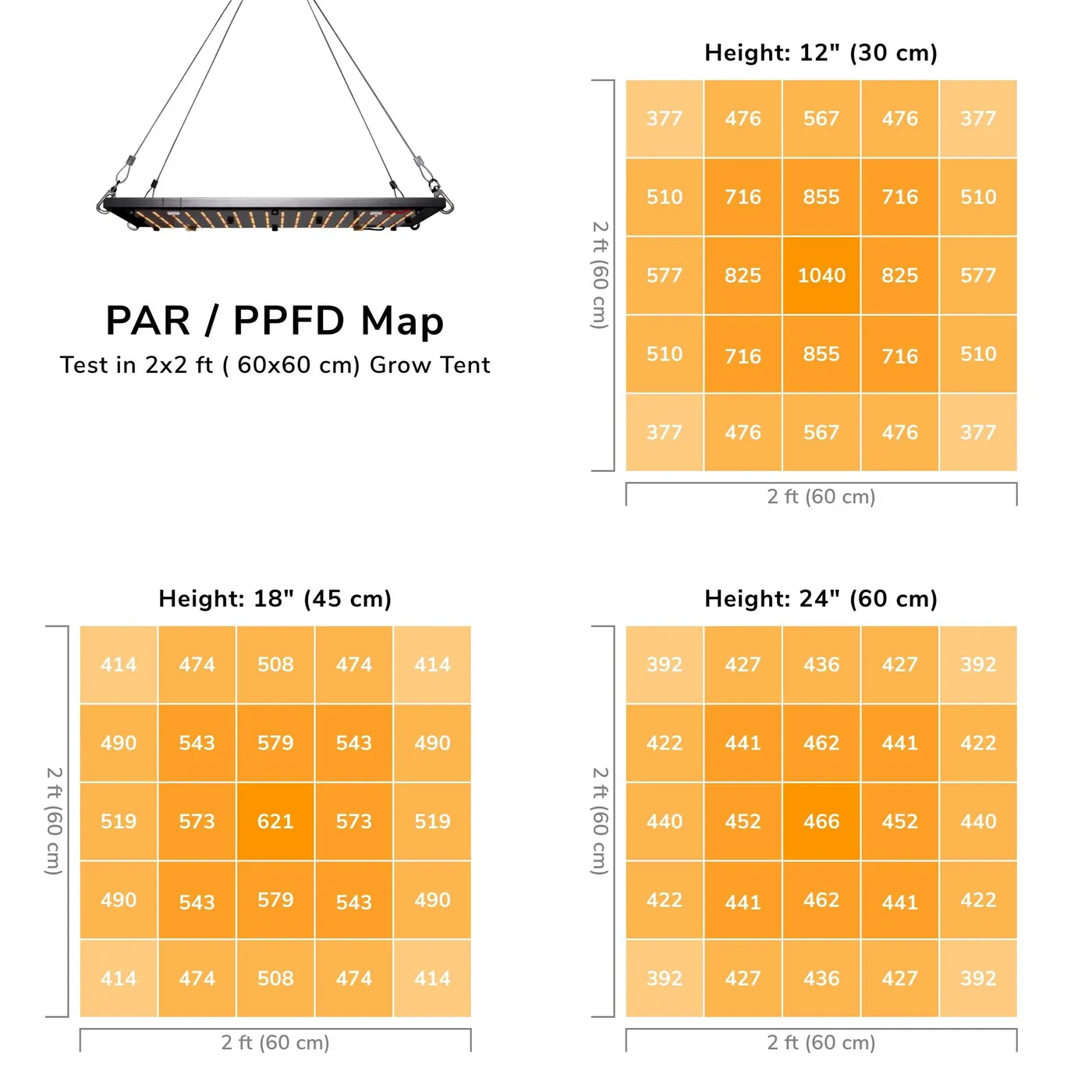
DLI: Daily Light Integral (mol/m²/d)
The daily light integral (DLI) describes how much photosynthetically usable light (PAR) your plant receives over the entire day, given the light remains at the same intensity for the time configured. It combines light intensity (PPFD) with the lighting duration (photoperiod) and is measured in mol/m²/d (i.e. light intensity per area per day). To learn more, we recommend our detailed article.
ePAR: Extended Photosynthetically Active Radiation
Extended Photosynthetically Active Radiation (ePAR) expands the traditional 400–700 nm PAR range by including far-red photons (i.e. light) up to 750 nm.
Illuminance (Lux or Foot-candle)
Illuminance is measured in lux (lx) or foot-candle (fc) and describes how much light, as perceived by humans, reaches a surface. The total light output of a lamp (i.e. its luminous flux) is measured in lumen (lm). Lux (lm/m²) is how many lumen reach a square meter whilst foot-candle (lm/ft²) describes lumen per square-foot.
Lx is the metric and fc the imperial unit. Both units are interchangeable: 1 lx is equal to 0.0929 fc or 1 fc is equal to 10.76 lx respectively.
Note that the illuminance will change depending on how close you get to a lamp, whilst the luminous flux only changes when changing the power (e.g. by dimming) of the lamp.
Illuminance is valued as it is perceived by the human eye. The corresponding measure for plants is called photosynthetic photon flux density (PPFD). To learn more, we recommend our detailed article.
IR: Infrared
Infrared (IR) light describes electromagnetic radiation between 700 nm and 1 mm. IR radiation can be felt as heat (e.g. when you're exposed to sunlight). Some plants may also use near infrared (NIR) in the range of 700 to 1400 nm to grow. IR light cannot be seen by the human eye.
Luminous Flux (Lumen)
The total light output of a light source is described as luminous flux or luminous power. It is measured in lumen (lm).
Note that the illuminance will change depending on how close you get to a lamp, whilst the luminous flux only changes when changing the power (e.g. by dimming) of the lamp.
Lumen is a measurement for humans and light is valued as it is perceived by the human eye. The synonym in lighting for plants would be PPF. To learn more, we recommend our detailed article on the difference between Lumen and PPFD.
Light Intensity
In physics, intensity describes energy per unit area. Light intensity means how much light hits on a given area. DLI, PPFD, and illuminance are all measurements of light intensity.
McCree Curve
The McCree curve (🌱 in the chart below) represents the average photosynthetic response of plants to different wavelengths of light, based on research conducted by Dr. Keith McCree in the 1970s. While it shows that plants generally respond more efficiently to red and blue light, the actual photosynthetic response varies among plant species, growth stages, and environmental conditions.
Due to this variability and practical measurement considerations, the scientific community widely adopted PAR (Photosynthetically Active Radiation) as a standard metric. PAR simply counts all photons between 400–700 nm equally, providing a more straightforward and universally applicable measure of light available for photosynthesis.

PAR: Photosynthetically Active Radiation
The range of wavelengths of light which is used by plants to grow is referred to as photosynthetically active radiation (PAR). The PAR spectrum contains wavelengths from 400 nm to 700 nm. The amount of PAR reaching a surface, e.g. the plant's leaves, is measured in PPFD, which stands for photosynthetic photon flux density. To learn more, we recommend our detailed article.

Photoperiod (h)
The photoperiod describes the duration of daily illumination received by a plant. It is commonly used to describe grow light schedules, meaning how many hours a day a grow light is turned on. This is why we measure the photoperiod in hours (h).
Photosynthesis
Photosynthesis is the process in which plants transform light, water, and carbon dioxide into oxygen and energy in the form of sugar. This is the key to how plants actually grow.
Power Draw: Watt (W) vs Kilowatt-Hour (kWh)
Power draw describes the electrical power consumption in watts (W). When paying for electricity you pay for the energy you've used. Energy is generally measured in kilowatt-hours (kWh).
💡 Let's say you have a lamp with a power draw of 1000 W (= 1 kW) and have turned it on for one hour, it has consumed one kilowatt-hour (1 kWh) of energy.
PPE: Photosynthetic Photon Efficacy (µmol/J)
Photosynthetic photon efficacy (PPE) is measured in µmol/J. It describes a grow light's output in the PAR spectrum (µmol/s) per watt (W = J/s) of electricity used. The higher the PPE, the less you spend on electricity for the same yield.
PPF: Photosynthetic Photon Flux (µmol/s)
Photosynthetic photon flux (PPF) is measured in µmol/s. It describes the total output of a light source within the PAR spectrum. While the PPF of a lamp stays the same, the PPFD increases the closer a surface is in respect to the light source. The PPF changes only, if its power intake is modified (e.g. by dimming) or the light's efficiency changes (e.g. due to aging).
The synonym in lighting for humans would be luminous flux (lumen). Read this detailed article to learn more about the different perception of light between plants and humans.
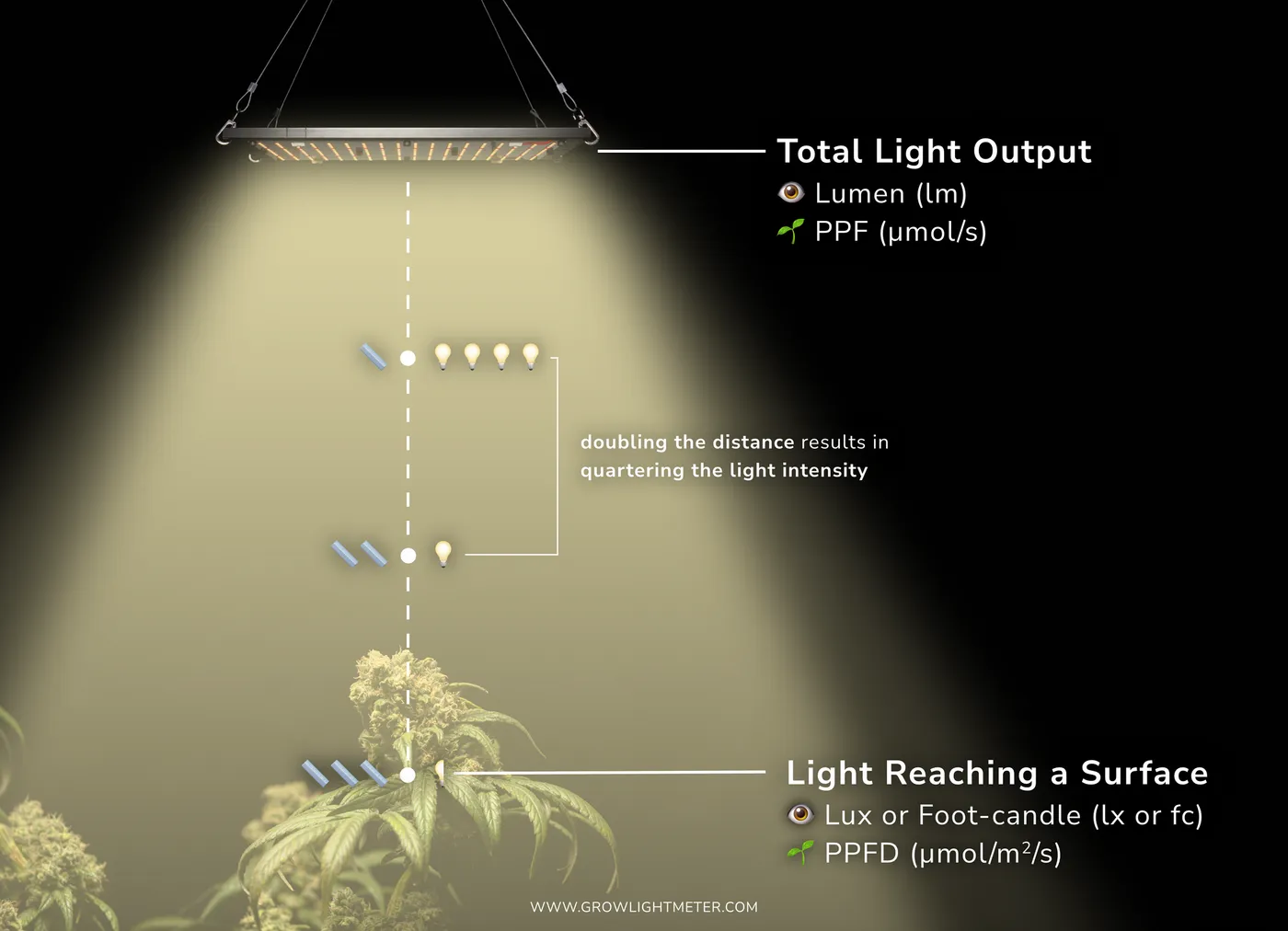
PPFD: Photosynthetic Photon Flux Density (μmol/m²/s)
The intensity of PAR reaching a surface, such as plant leaves, is quantified as photosynthetic photon flux density (PPFD). PPFD is typically measured in micromoles of photons per square meter per second (μmol/m²/s). This means that PPFD specifically measures the light available to plants for photosynthesis and thus, impacts their growth. It is thus the most relevant measure for plant lighting.
The synonym in lighting for humans would be illuminance. Read this detailed article to learn more about the different perceptions of light between plants and humans.

Spectrum
A grow light’s spectrum describes the ratio of the different wavelengths (or colors) that make up the light emitted.
Plants “see” light differently than the human eye and require more of some wavelengths for biochemical processes such as photosynthesis. In order to quantify the amount of light within the right spectrum correctly, photosynthetically active radiation (PAR) – meaning “light for plants” – is measured as PPFD.
UV: Ultraviolet
Ultraviolet (UV) light describes electromagnetic radiation in the range of wavelengths between 100 nm and 400 nm and is divided into three bands: UVA (315-400 nm), UVB (280-315 nm) and UVC (100-280 nm). Most UV light cannot be seen by the human eye.
Wavelength (nm)
What we know as “light” is actually electromagnetic radiation of different wavelengths that are visible to our eyes. The wavelength determines the light’s color. White (or natural) light consists of all colors of the rainbow combined 🌈.
Electromagnetic radiation (including light) travels in waves. The wavelength describes the distance between the repetition of these waves and thus, ultimately defines its color. The wavelength is a unit of distance and is measured in meters. Since visible light has a relatively short wavelength we use nanometers (nm), which is one billionth of a meter, as a common unit of measurement. Sometimes also micrometers (μm) or millimeters (mm) are used.
YPF: Yield Photon Flux (μmol/s)
Yield photon flux (YPF) measures the total light output of a light source weighted by the plant's light response defined by the McCree curve. The more common metric is photosynthetic photon flux (PPF) which weighs light equally at every wavelength.
YPFD: Yield Photon Flux Density (μmol/m²/s)
Yield photon flux density (YPF) measures light in micromoles per square meter per second (μmol/m²/s) weighted by the plant's light response defined by the McCree curve. The more common metric is PPFD which weighs light equally at every wavelength.
If you want to measure any of the above (or at least, what's most important: PPFD and DLI), we highly recommend our Grow Light Meter app. It allows you to quickly and easily measure PAR as PPFD, the daily light integral as well as calculate your plant's ideal lighting – and all of this on your phone or tablet.
Still unclear? Or did we miss something? Simply reach out to us via the contact option. We hope this article helps you to understand more of the grow light science – and maybe even impress your friends at parties :)


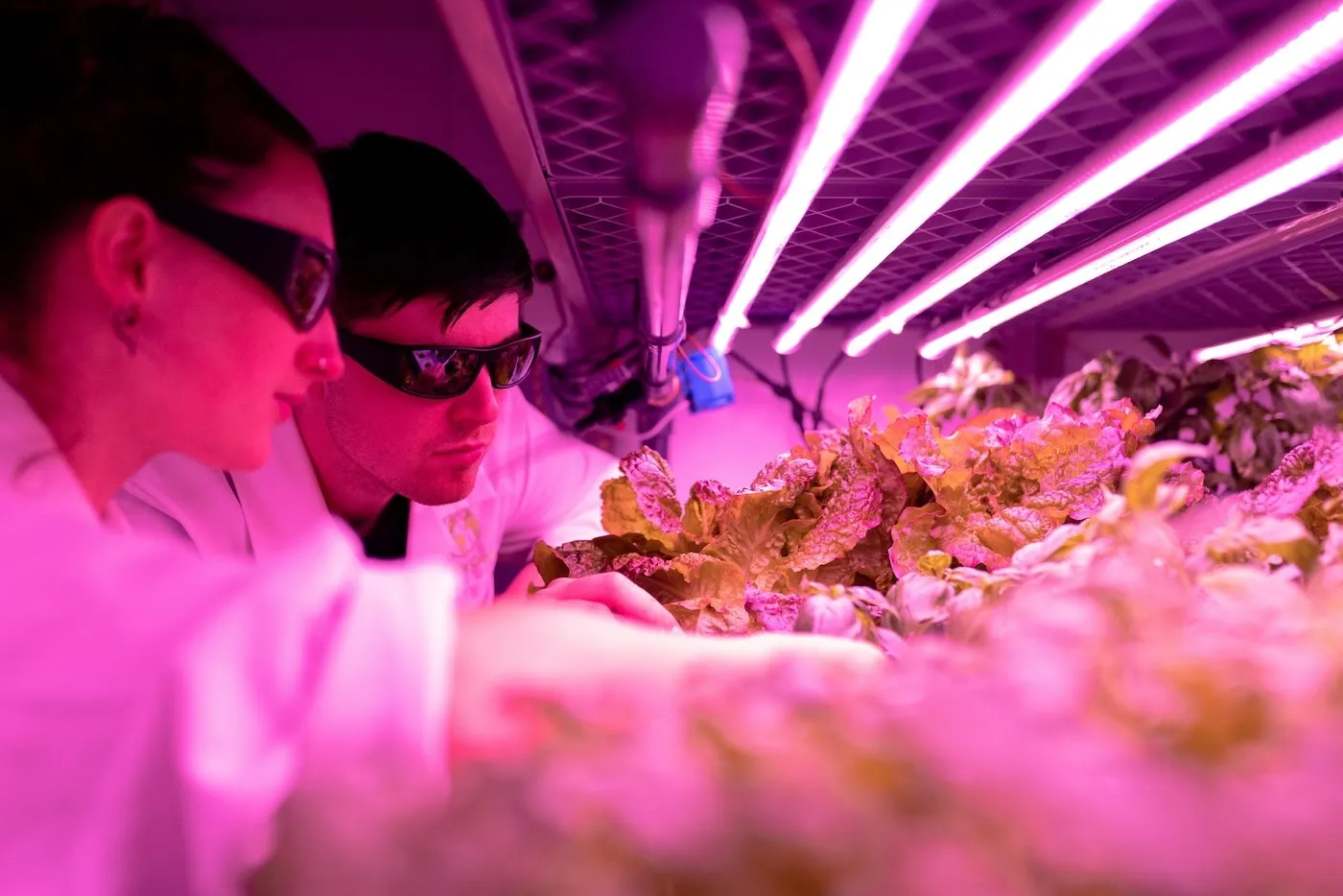
 Share This
Share This



